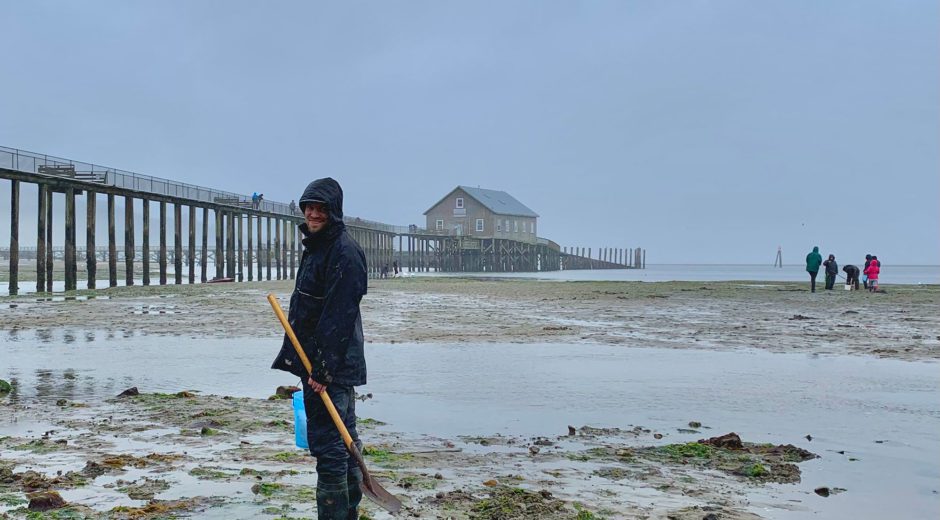Join generations of North Coast residents in the fun, rewarding activity of gathering shellfish from the bays and ocean sands. All you need is an Oregon Department of Fish and Wildlife annual shellfish license, an understanding of what to dig and catch limits, and a few simple tools. Be forewarned that rangers do check shellfish on site, so you can get a ticket even if you don’t know the rules. Each time you go out, call the ODFW Shellfish Hotline to hear of beach closures due to elevated levels of marine biotoxins that can make you sick.
Bay clams range in size and use. The huge gaper (or horse) clam and butter clams live deep in the sand, so you’ll have to use a heavy-duty shovel to access them once you see their distinctive “show” in the sand. These clams are great for grinding and using in chowder or fritters. Hard-shelled cockles and littlenecks lie closer to the surface, and can be gathered with a hand shovel and rake quite easily. These smaller clams can be chopped and used in pasta dishes or just steamed in the shell. They’re nice because they don’t need to be purged of sand before cooking.
Good places to start are Tillamook Bay near Garibaldi Pier or Netarts Bay. ODFW has developed excellent maps that show where to find each species. Be sure to purchase your license ahead of time, read the regulatory signage on site before you do any recreational shellfish harvesting, and know the tides. Although the danger is not as serious as being stranded too far out in the ocean, many an unwary clam digger has wandered too far into the bay and had to slog back in thigh-high water as the tides rush in.
Razor clams — named for their thin, brittle, razor-sharp shells that can cut your hand when grabbing them — are mild, tasty, and fun to gather. Harvested from ocean beaches during very low tides, clammers use a narrow spade or a handled tube called a clam gun that allows you to remove sand quickly and efficiently once you see a donut-shaped hole in the sand. 95% of these clams are harvested on the 18 miles of beach in Clatsop County, so if you head to one of the beaches north of Tillamook Head, you’ll see exactly where you should be by the numbers of recreational harvesters on the beach. Check out a local tackle shop or big box store to buy one of these and a mesh bag or bucket to store your catch in. This handy guide and video can help you find, harvest, and clean them. Note that razor clam harvest is closed for conservation from July 15-September 30 each year.

